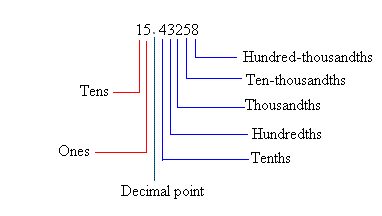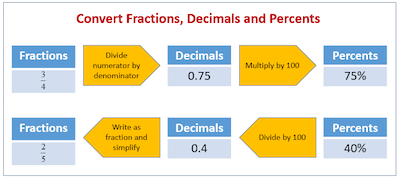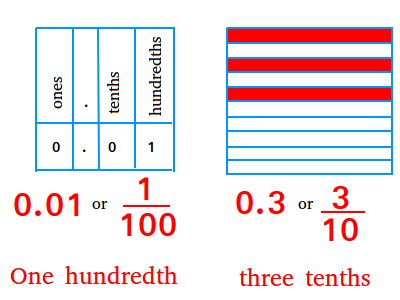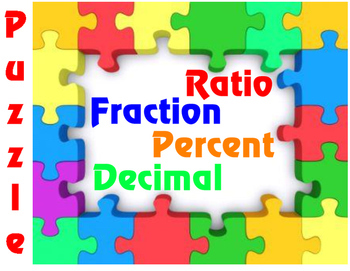In order to better understand decimals, you need to know what decimals are in the first place.
Simply put, a decimal is just a number that is expressed in the scale of tens. If you are looking for a more familiar language, then you can say that decimal numbers include a decimal point to represent a whole number and a fraction of a whole number (tenths, hundredths, etc.
Discover everything you need to know about fractions.
The decimal point is just the dot or point that is used to separate the whole part of a number from its fractional part.

If you take a closer look at the decimal word, you can easily recognize the prefix deci that means equal to 1/10 or 0.1.
However, generally speaking, a decimal refers to any fraction (either proper or improper) that comes with a denominator that is 10, 100, 1000, and so forth.
Here are some examples of decimals:
5/10 = 0.5
2/100 = 0.02
16/1000 = 0.016
1/100 = 0.01
195/10000 = 0.0195
45/10 = 4.5
234/100 = 2.34
If you look closely, you can see that while the first 5 are proper fractions, the last 2 are improper fractions.
Learn more abou working with decimals.
Decimals Terminology

There are some things that you need to keep in mind about decimals terminology:
- A proper fraction whose denominator can be written as a power of 10 is called a decimal fraction. Some examples include 5/10 = 0.5 and 16/1000 = 0.016.
- An improper fraction whose denominator can be written as a power of 10 is called a mixed decimal. Some examples include 45/10 = 4.5 and 234/100 = 2.34.
- We can say that a decimal is a combination of a whole number and a fraction of a whole number.
- Notice also that a whole number is also a decimal. For example, 69 can also be written as 69.0 since 69 = 69.0.
Discover the pros and cons of decimals vs fractions.
The Decimal Place Value
When talking about decimals, you need to know what the decimal place value is.

In the number 15.43258, the place value for 4 is the tenths.
Note that 1 tenth = 0.1 or 1/10, so 4 tenths means 4 × 0.1 or 0.4.
Besides, in the number 15.43258, the place value for 2 is the thousandths.
1 thousandth = 0.001 or 1/1000, so 2 thousandths means 2 × 0.001 or 0.002.
There is another way to look at it and extract 0.002 from 15.43258.
All you need to do is to write down the 2 and then replace all the other numbers to the left of 2 with 0. You get 00.002 and looking at 00.002, you can get rid of the extra zero on the left. Notice that the last number that will be replaced with a zero is the one right before the number 2. Finally, as you can see, you still get the same answer of 0.002.
Discover how to convert decimal to fraction.
Some Decimal Examples
#1: For the decimal number 756.45, find the name of the place of the underlined digit:
4 is in the tenths place.
#2: For the decimal number 6214.265, find the name of the place of the underlined digit:
5 is in the thousandths place.
#3: For the decimal number 32564.10477, find the name of the place of the underlined digit:
0 is in the hundredths place.





